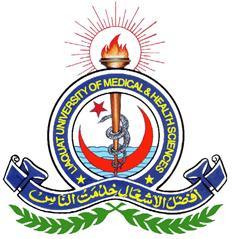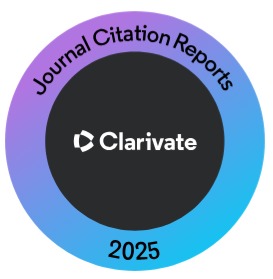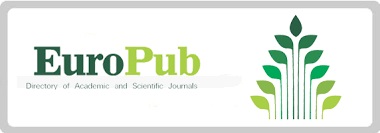Different Umbilical Cord Cutting Techniques Prevailing among Rural Population of District Attock
Abstract
Objectives: To study different umbilical cord cutting techniques prevailing among rural population of district Attock.
Methodology: This descriptive cross-sectional study conducted from April - June 2017 in the rural population of district Attock. The sample size was 300 which were selected by non-probability convenient sampling technique. The data was collected over a period of three months using a pre-tested self-structured questionnaire. Informed consent was taken. Data was analyzed in SPSS version 23.
Results: A total number of 300 infantswere included in this study. The mean age (in days) ± SD of infants was 14.10±8.96. The mean age (in years) ±SD of mothers was 27.58±3.99. Surgical blade usage for cord cutting was 50%, 48.7% used scissors while 1.3% used knife to cut the umbilical cord after birth. 8.7% mothers applied nothing on the cord for cord care, whereas 30.7% of mothers applied domestic products on the infant’s umbilical cord which included fried onion, garlic, ghee, oil, kohl and turmeric. Chi-Square test revealed that the use of harmful domestic products was highest among the infants who were born at homes (p<0.05). The application of medical or domestic products on the cord was irrespective of infant’s gender and mothers’ educational status.
Conclusion: This study revealed diversity in methods of cutting and caring the cord after birth among the rural population of district Attock. Most of the participants of this study maintained the good cord care practices; however, there were a significant proportion of participants who followed harmful traditional practices for their infant’s cord care.
Keywords: Umbilical Cord, Cord Care, Neonatal Mortality
Downloads
Published
How to Cite
Issue
Section
License
Submission of a manuscript to the journal implies that all authors have read and agreed to the content of the undertaking form or the Terms and Conditions.
When an article is accepted for publication, the author(s) retain the copyright and are required to grant the publisher the right of first publication and other non-exclusive publishing rights to JLUMHS.
Articles published in the Journal of Liaquat University of Medical & health sciences are open access articles under a Creative Commons Attribution-Noncommercial - Share Alike 4.0 License. This license permits use, distribution and reproduction in any medium; provided the original work is properly cited and initial publication in this journal. This is in accordance with the BOAI definition of open access. In addition to that users are allowed to remix, tweak and build upon the work non-commercially as long as appropriate credit is given and the new creations are licensed under the identical terms. Or, in certain cases it can be stated that all articles and content there in are published under creative commons license unless stated otherwise.























